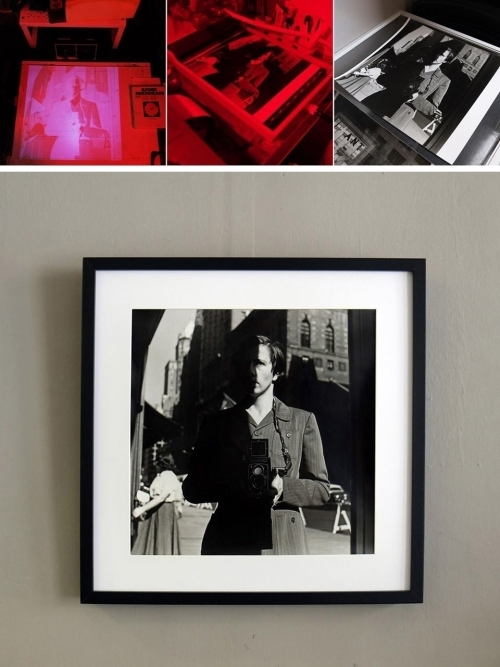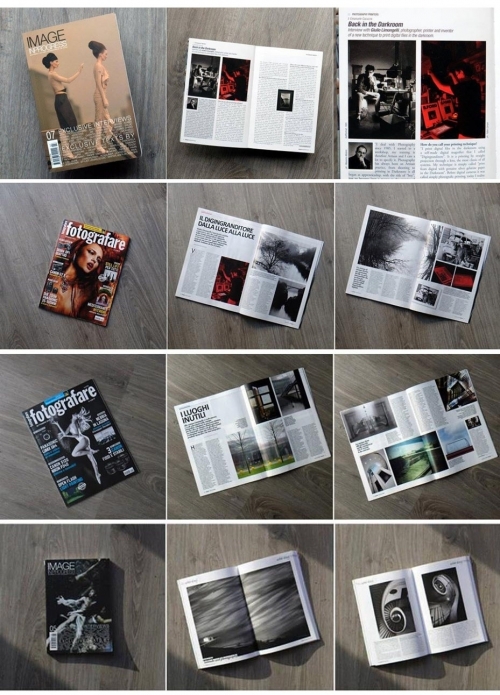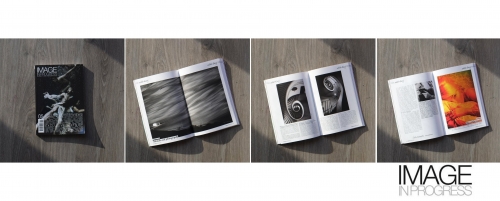Solitude and photography - Artist Diary Ph-t: Giulio Limongelli*
Article from IMAGE IN PROGRESS paper and dig magazine
When photography means being a little bit of a magician and and a little bit of a miracle worker.
I started my profession back when photography meant being a little bit of a magician and a little bit of a miracle worker. Photography is an ancient art. People at the time couldn't explain how images could emerge, as if by magic, out of the darkness of a room or from the mystery of a roll of film.
Today, in the digital era, that magic has vanished a little bit, but for those like me who started their journey in the “analog” age, digital is nothing but a new opportunity, an addition that completes my knowledge and amplifies my creativity.
Photography is an art in continuous evolution… always new, but still faithful to itself.
Everything started from the simple desire to experiment with something new, not just to capture memories. When I was 20 years old, I was doing voluntary work in the mountains, isolated. I don’t think it is a coincidence that I approached photography when I was on my own. To observe, and not only see, is an exercise that requires concentration. I cannot share it when I'm in the company of other people. I suppose this was also the beginning and the motivation for my passion for landscape and nature photography.
At that time, my father gave me his old Voigtländer Vito B, a very simple 35mm camera which was limited by a not-so-fast fixed lens. I used to walk in the mountain woods experimenting with colour and black and white. I immediately realised the lack of flexibility a fixed lens camera could have so my interest moved towards SLR cameras. I bought my first Yashica, then a Contax camera. When I finished my voluntary work, I came in contact with the most important photography studio and lab in my city. I started an apprenticeship there that allowed me to receive a complete formation, from shooting to print. I think that printing in a dark room makes up the other important half of photography. It has the same principles and allows you to consolidate your knowledge of the subject.
At the end of the eighties, I started my freelance career, working for private companies and corporates. The studio where I was working started to implement new lighting equipment and cameras. I started to work with medium format 6x6 and 6x7 with Bronica and Mamyia and also 4x5 view cameras from Toyo and Tachihara.
During these years I also started to teach photography both privately and for public companies, and collaborate with travel and tourism magazines. My personal interest was leaning more and more towards landscapes, nature and architectural photography but I had to do other genres as well because they were the ones that allowed me to photograph for a living. My path was on two parallels tracks: commissioned photography and personal photography.
On the business track, the most interesting genre was industrial photography and still life. Despite the rise of digital technologies, my approach to the medium has not changed. For me, the camera is all about focus, time, aperture and ISO. Post production is a useful tool one shouldn't abuse. My goal is photography, the tool I use means little.
Usually I am more interested in lenses than bodies. During my career I have used a variety of lenses, but my favourites are primes and telephotos. During the last few years, I started to use shorter focal lengths once again so that I can get closer to the subject.
My sources of inspiration
For me it is difficult to understand what influenced my way of working. I think that I have been influenced more by trends than artists. We are living in a digital world crowded by images, but that was the case in the “analog” days as well. For this reason, limiting what inspired me to only a handful of elements is impossible. I can surely quote some of the most known names in the category, but comparing myself with my colleagues was also important. I don’t like to recall the big names in photography, but if I have to, I can quote a couple of italian names: Franco Fontana, Luigi Ghirri.
Today, thirty years from the beginning of my interest in photography, I try to be true to myself: I follow this world in constant evolution without prejudice, looking for the beauty that lies around us. What I do is what represents me, unveiling my limits and my capacities.
(translation Heather Broster)
This and other articles on http://www.imageinprogress.com/
Buy the IMAGE IN PROGRESS magazine! Special Promo for Giulio Limongelli Fotografia
Click here down on the picture





